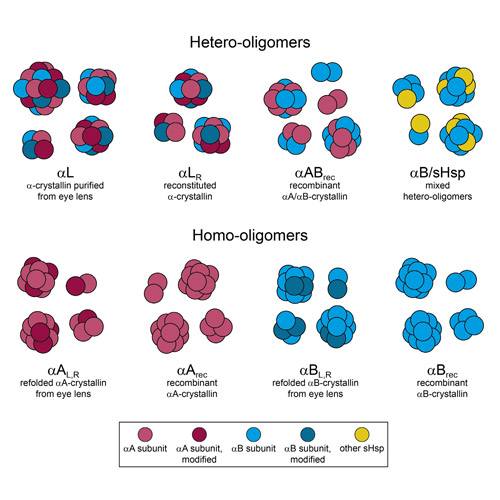Structure and function of α-crystallins: Traversing from in vitro to in vivo
04-Jan-2016
Biochimica et Biophysica Acta (BBA), Volume 1860, Issue 1, Part B, Pages 149–166, doi:10.1016/j.bbagen.2015.06.008
Background
The two α-crystallins (αA- and αB-crystallin) are major components of our eye lenses. Their key function there is to preserve lens transparency which is a challenging task as the protein turnover in the lens is low necessitating the stability and longevity of the constituent proteins. α-Crystallins are members of the small heat shock protein family. αB-crystallin is also expressed in other cell types.
Scope of the review
The review summarizes the current concepts on the polydisperse structure of the α-crystallin oligomer and its chaperone function with a focus on the inherent complexity and highlighting gaps between in vitro and in vivo studies.
Major conclusions
Both α-crystallins protect proteins from irreversible aggregation in a promiscuous manner. In maintaining eye lens transparency, they reduce the formation of light scattering particles and balance the interactions between lens crystallins. Important for these functions is their structural dynamics and heterogeneity as well as the regulation of these processes which we are beginning to understand. However, currently, it still remains elusive to which extent the in vitro observed properties of α-crystallins reflect the highly crowded situation in the lens.
General significance
Since α-crystallins play an important role in preventing cataract in the eye lens and in the development of diverse diseases, understanding their mechanism and substrate spectra is of importance. To bridge the gap between the concepts established in vitro and the in vivo function of α-crystallins, the joining of forces between different scientific disciplines and the combination of diverse techniques in hybrid approaches are necessary.











